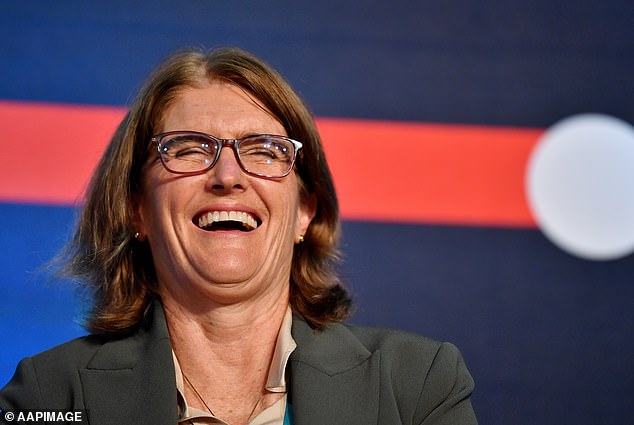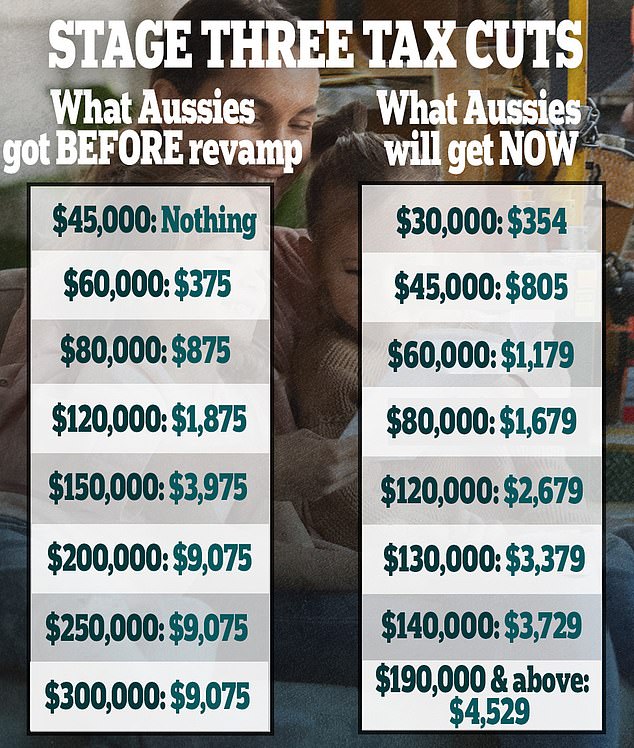<!–
<!–
<!– <!–
<!–
<!–
<!–
An international credit rating agency expects the Reserve Bank to cut interest rates five times by 2025, saving the average borrower $500 a month in payments.
Moody’s Analytics said two rate cuts were likely by Christmas in September and December, with inflation now at its lowest level in two years.
But until then, economist Harry Murphy Cruise said Reserve Bank Governor Michele Bullock would warn borrowers about the prospect of another rate hike, with phase three of the tax cuts taking effect on July 1. .
“Of course, the Reserve Bank board will continue to hint that further increases may be necessary until then,” he said.

An international credit rating agency expects the Reserve Bank to cut interest rates five times by 2025 (file image)
‘This is because the board is keen to stop a rise in household spending ahead of the expected rate cuts; That’s especially true with tax cuts also on the horizon.
“We anticipate two rate cuts this year, in September and December, and another three cuts next year.”
If that prediction comes to fruition, the Reserve Bank’s cash rate would fall from a 12-year high of 4.35 per cent to 3.85 per cent by Christmas for the first time since June 2023.
Three more cuts in 2025 would take the RBA cash rate to 3.1 percent for the first time since February 2023.
This is particularly good news for the 3.3 million households paying a mortgage in Australia.
The possibility of five rate cuts would mean a borrower with an average mortgage of $600,000 would see their monthly home loan payments fall by $486 to $3,422, down from $3,908 with an existing variable rate of 6.79 percent. .
Inflation in the year through January remained at a two-year low of 3.4 percent, according to the monthly gauge.
Meat and seafood prices fell 2 per cent over the year, Australian Bureau of Statistics figures showed.
When volatile items were excluded, the trimmed mean measure of inflation was 3.8 percent.
Murphy Cruise said this showed core inflation was moderating more quickly towards the RBA’s target of 2 to 3 per cent.
“All this reinforces our view that the RBA’s next move will be downwards,” he said.
But there are concerns that the stage three tax cuts risk reviving inflationary pressures.
Under the changes proposed by the Labor Party, people on low and middle incomes are receiving more benefits.


But until then, economist Harry Murphy Cruise said Reserve Bank Governor Michele Bullock (pictured) would warn borrowers about the prospect of another rate hike, with stage three tax cuts coming in effective July 1.


Those earning $80,000 a year receive $1,679 in support, up from $875 in the previous coalition government’s package legislated in 2019 with the support of Labor in opposition.
This would occur when the marginal tax rate for those earning between $18,200 and $45,000 is reduced from 19 percent to 16 percent.
Those earning between $45,000 and $135,000 will pay a marginal tax rate of 30 percent, up from 32.5 percent currently.
Labor will also maintain the 37 per cent bracket for those earning between $135,000 and $190,000 rather than scrapping it as the Coalition had sought.
Moody’s Analytics is independent from Moody’s Investors Service, the credit rating agency, but they are part of the same company based in New York.
